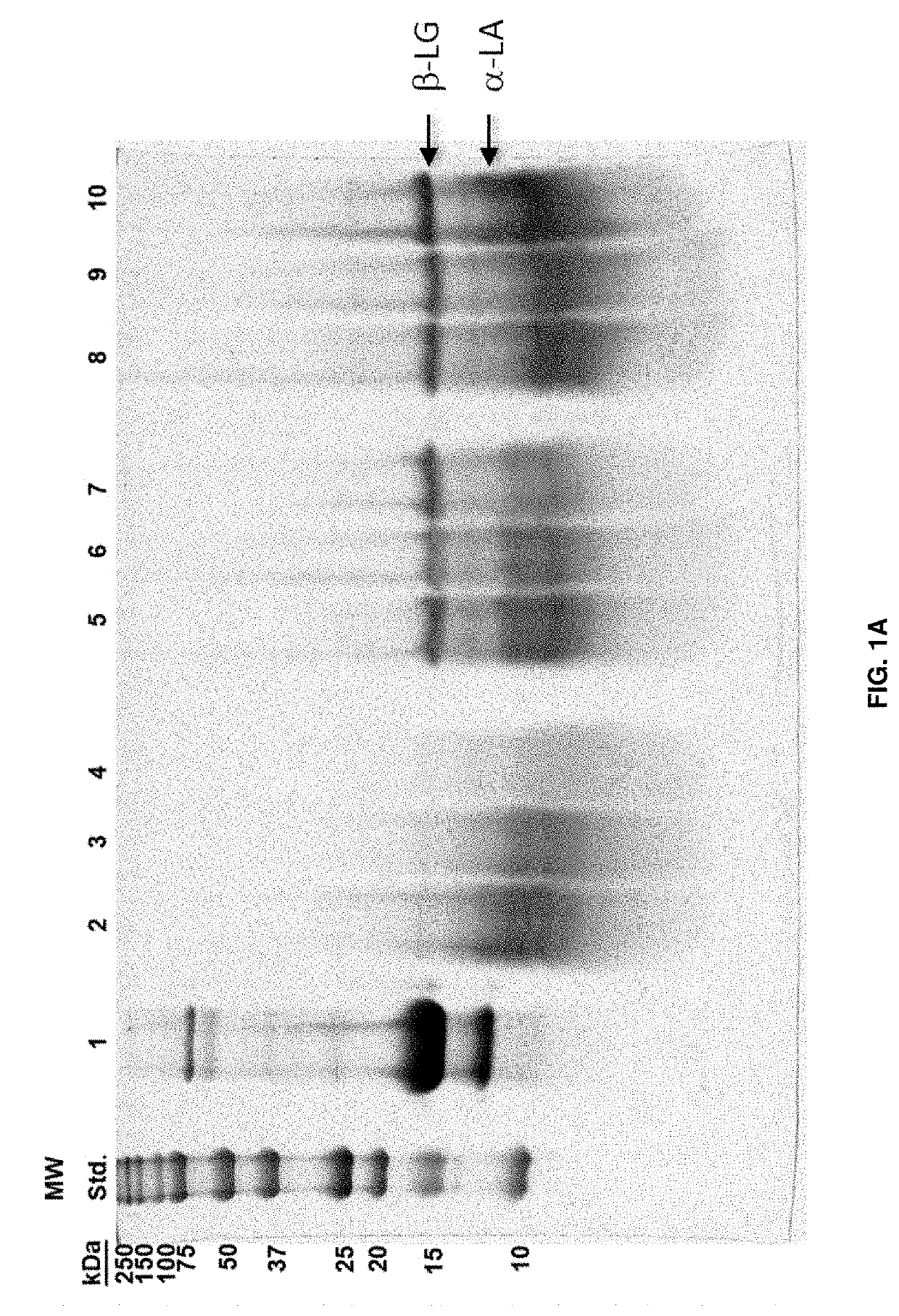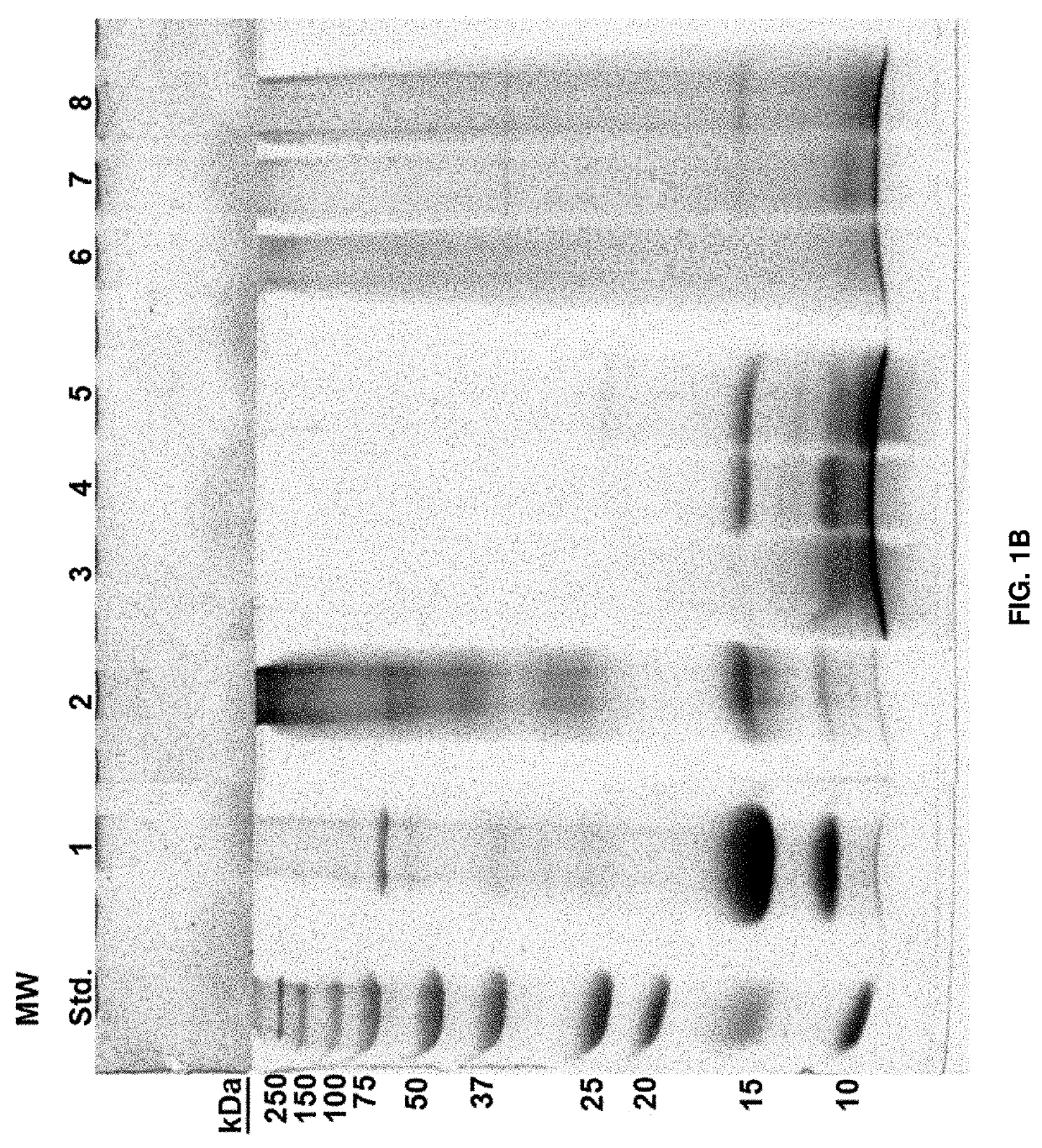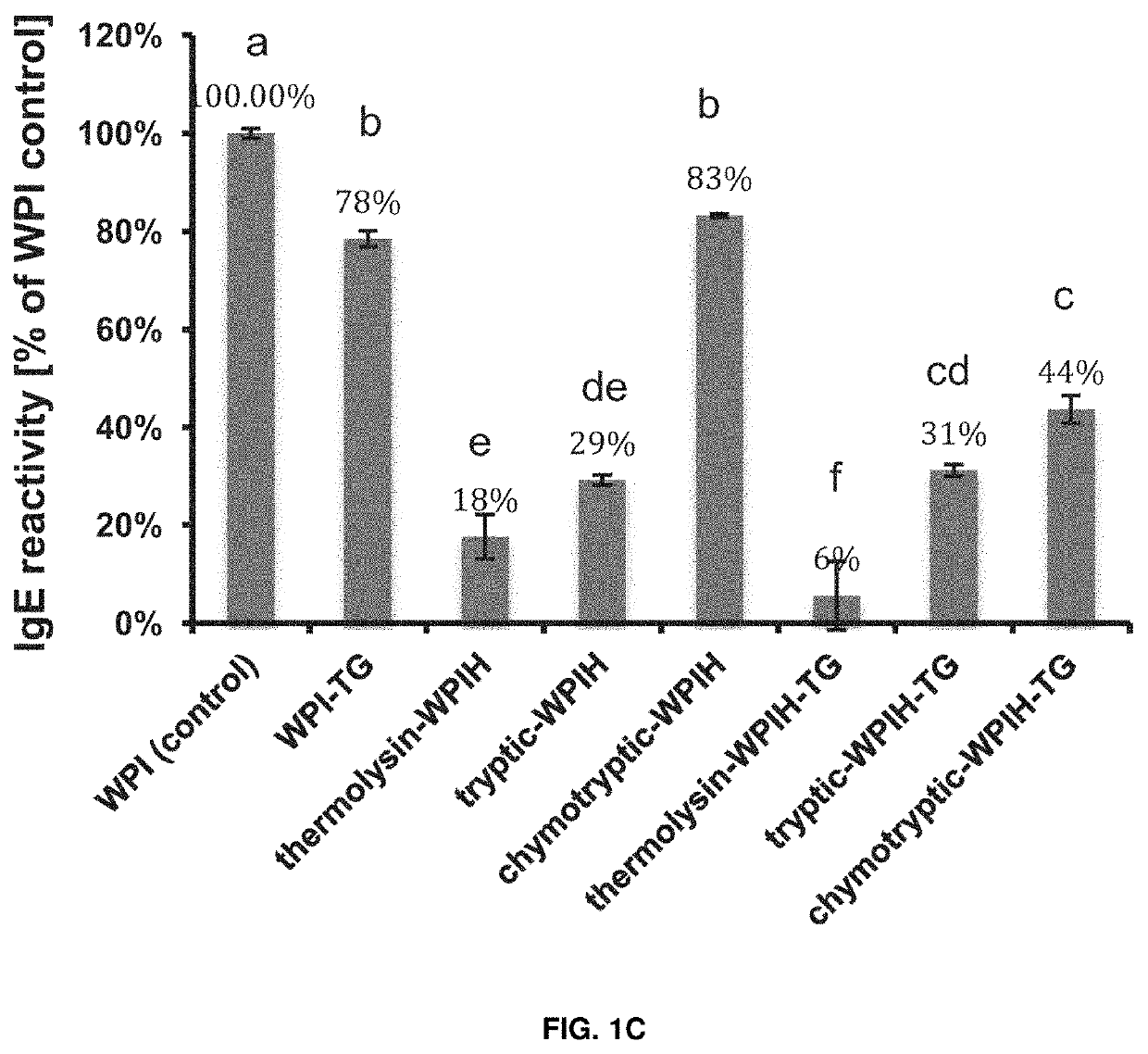Methods of processing protein and resulting products
a technology of protein and resulting products, applied in the field of processing proteins, can solve the problems of hypoallergenic emulsions and foams, and achieve the effects of reducing the allergenicity of proteins, reducing the allergenicity, and reducing the allergenicity
- Summary
- Abstract
- Description
- Claims
- Application Information
AI Technical Summary
Benefits of technology
Problems solved by technology
Method used
Image
Examples
example 1
A Two-Step Enzymatic Modification Method to Reduce Immunoreactivity of Milk Proteins
Summary
[0058]A two-step enzymatic approach to reduce immunoreactivity of whey protein isolate and casein has been studied. The method involves partial hydrolysis of proteins with proteases, followed by repolymerization with microbial transglutaminase. Whey protein isolate partially hydrolyzed with chymotrypsin, trypsin, or thermolysin retained about 80%, 30%, and 20% of the original immunoreactivity, respectively. After repolymerization the immunoreactivity was about 45%, 35%, and 5% of the original immunoreactivity, respectively. The immunoreactivity of hydrolyzed and repolymerized casein was negligible compared to native casein. The repolymerized products were partially resistant to in vitro digestion. Peptides released during digestion of repolymerized thermolysin-whey protein hydrolysate had less than 5% immunoreactivity, whereas those of whey protein control exhibited a sinusoidal immunoreactivi...
example 2
Nanostructure and Functionality of Enzymatically Repolymerized Whey Protein Hydrolysate
Summary
[0127]Whey proteins (WPI) were polymerized with transglutaminase (TGase) before and after partially hydrolyzing the protein with thermolysin to produce protein nanoparticles / polymers. Electrophoresis and atomic force microscopy (AFM) were used to determine the size and structural characteristics of the polymers. The foaming and emulsifying properties of these nanoparticles were studied. The polymerized WPI (WPI-TG) produced more stable foams than the repolymerized WPI hydrolysate (WPIH-TG). In contrast, WPIH-TG produced better emulsions with better storage stability than WPI-TG emulsions. These differences were due to their structure and electrostatic properties: The WPI-TG particles were linear, less than 100 nm in size with lower net negative charge, whereas the WPIH-TG polymers were much larger and were highly negatively charged as judged from zeta potential. This suggested that while pr...
PUM
| Property | Measurement | Unit |
|---|---|---|
| pH | aaaaa | aaaaa |
| pH | aaaaa | aaaaa |
| weight ratio | aaaaa | aaaaa |
Abstract
Description
Claims
Application Information
 Login to View More
Login to View More - R&D
- Intellectual Property
- Life Sciences
- Materials
- Tech Scout
- Unparalleled Data Quality
- Higher Quality Content
- 60% Fewer Hallucinations
Browse by: Latest US Patents, China's latest patents, Technical Efficacy Thesaurus, Application Domain, Technology Topic, Popular Technical Reports.
© 2025 PatSnap. All rights reserved.Legal|Privacy policy|Modern Slavery Act Transparency Statement|Sitemap|About US| Contact US: help@patsnap.com



